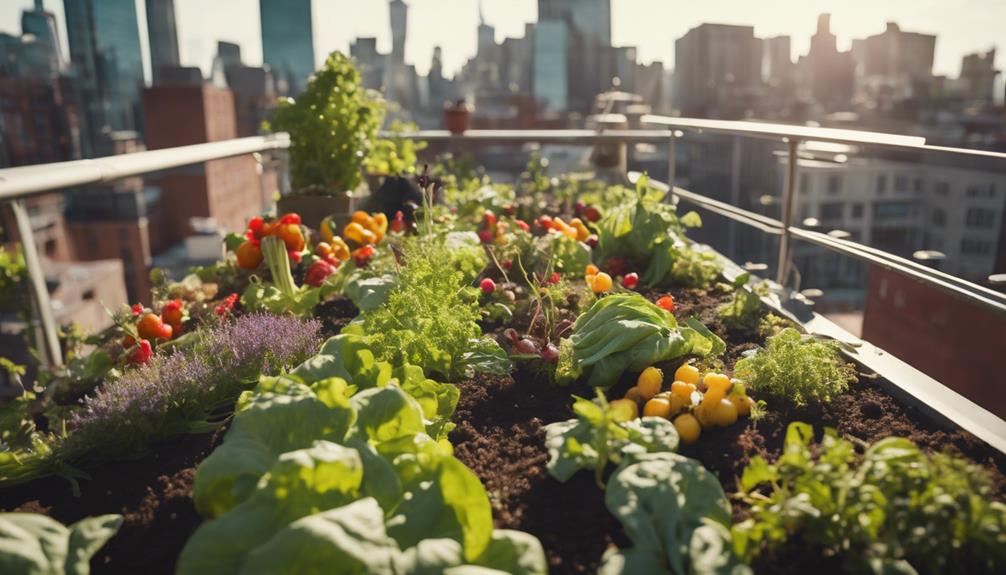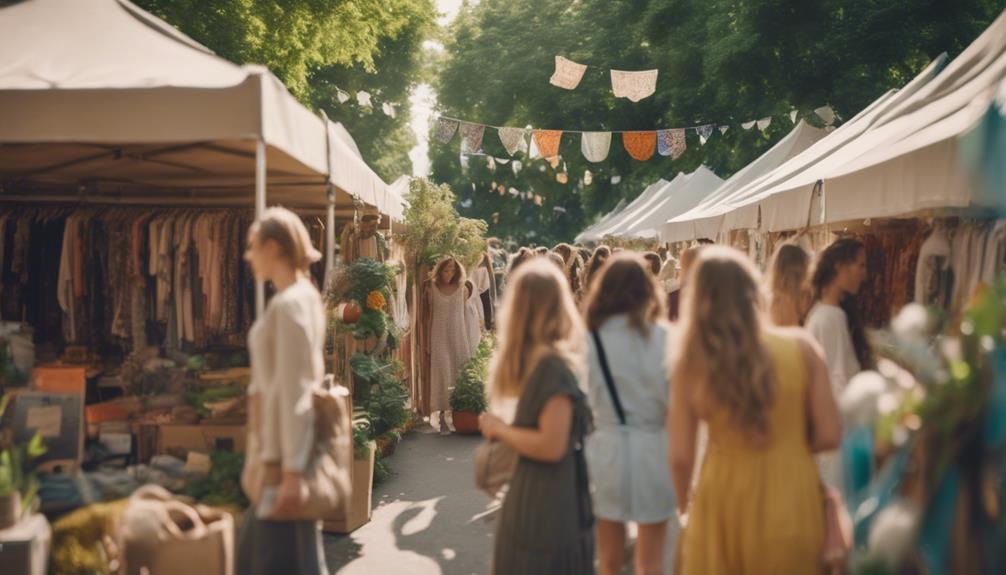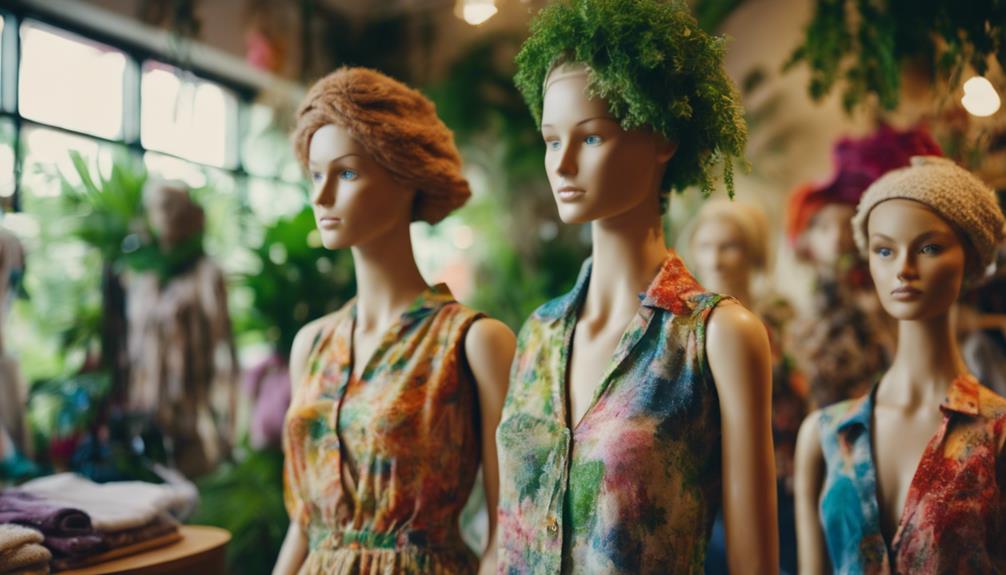Did you know that by 2050, we’ll need to increase food production by a whopping 56% to feed almost 10 billion people? Don’t worry! By embracing **sustainable practices**, like supporting agroecological methods, cutting **food waste** by a quarter, and transitioning to **plant-based diets**, we can make it happen while reducing greenhouse gas emissions. Innovations such as vertical farming and lab-grown meat also play key roles. These strategies not only help preserve ecosystems but also improve crop yields. Intrigued by how these puzzle pieces come together to form a **resilient food system**? Dive deeper into the world of sustainable food solutions to find out more about these exciting advancements!
Key Takeaways
- Agroecological practices, like intercropping and agroforestry, enhance land productivity while promoting biodiversity and resilience against climate change.
- Implementing waste reduction strategies, such as food recovery and composting, can significantly alleviate food insecurity and close the food gap.
- Innovations in food technology, including CRISPR and vertical farming, can dramatically increase crop yields and reduce resource use.
- Shifting dietary preferences towards plant-based options can lower greenhouse gas emissions and address land shortages for future food demands.
Current Food Production Challenges
Current food production faces considerable challenges, as we'll need to boost output by 56% by 2050 to feed nearly 10 billion people. With insufficient agricultural land, a projected gap of 593 million hectares looms large.
You're not only grappling with the need for increased agricultural production but also facing declining crop yields, which could drop by at least 5% globally due to climate change and soil degradation. These challenges threaten food security and make establishing a sustainable food system more urgent than ever.
Additionally, agriculture contributes to about 25-30% of global greenhouse gas emissions, which must be considerably reduced to combat climate change. One way to help bridge the food gap is by tackling waste — a staggering one-quarter of food produced for consumption gets discarded. If you can reduce this waste by just 25%, it could close the food gap by 12%.
The pressing need to address these current food production challenges is clear. Without effective solutions, we risk jeopardizing not only food security but also the health of our planet. It's time to rethink our approach and find sustainable methods to feed the growing global population.
Sustainable Practices for Agriculture
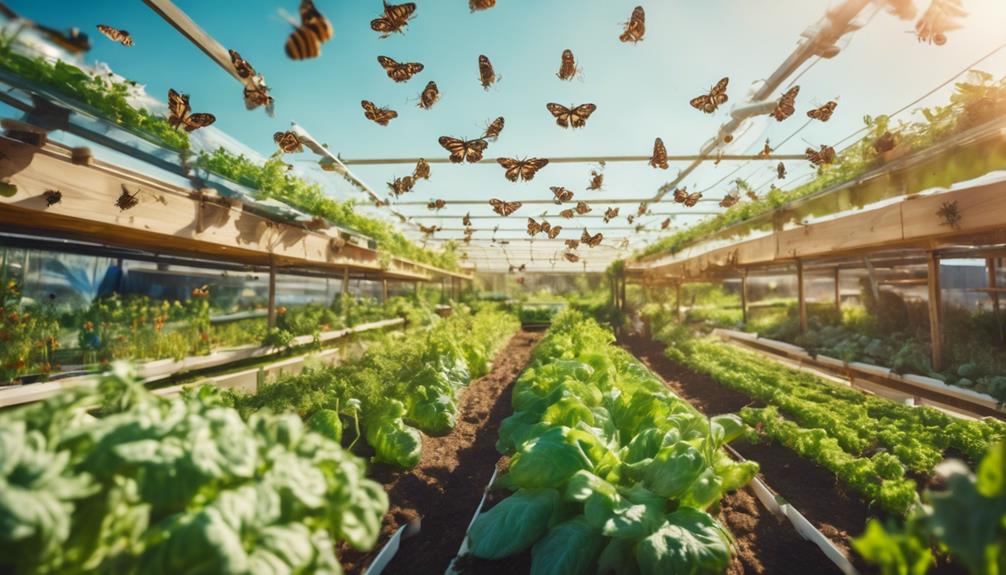
When you consider sustainable practices for agriculture, agroecological approaches and waste reduction strategies stand out as key solutions.
By integrating diverse crops and minimizing waste, you can enhance biodiversity and improve overall efficiency in the food system.
These methods not only help mitigate environmental impact but also pave the way for more resilient farming practices.
Agroecological Approaches
Agroecological approaches integrate diverse farming practices that boost ecosystem resilience and enhance land productivity while reducing reliance on chemical inputs. By embracing agroecology, you can improve sustainable food production through methods that promote biodiversity, such as intercropping and agroforestry. These practices not only increase crop yields but also contribute to healthier soils, addressing soil degradation that affects one-quarter of global cropland.
Additionally, implementing these principles helps lower greenhouse gas emissions, as they reduce dependence on fossil fuels and chemical fertilizers. In fact, food production accounts for around 25% of global emissions, so shifting to agroecological methods can make a significant impact.
Moreover, agroecology enhances local food security by fostering diverse cropping systems that withstand climate change impacts. This resilience is essential for supporting the livelihoods of smallholder farmers who rely on stable food sources.
Waste Reduction Strategies
Reducing food waste is essential for creating sustainable agriculture, as approximately one-third of all food produced is never consumed. By implementing effective waste reduction strategies, you can greatly improve our food supply and contribute to sustainable food systems.
Start by enhancing your awareness of food storage techniques and expiration dates. This knowledge can help you minimize household food waste, a major contributor to the overall problem.
Investing in food recovery initiatives, like food banks and community kitchens, can also redirect surplus food to those in need, preventing it from ending up in landfills.
Additionally, adopting practices such as composting organic waste returns valuable nutrients to the soil, supporting healthier agricultural systems and enhancing nutrition.
To truly make an impact, consider working with local farmers and organizations to promote better food transportation methods, which can reduce spoilage during distribution.
Reducing Food Waste Effectively
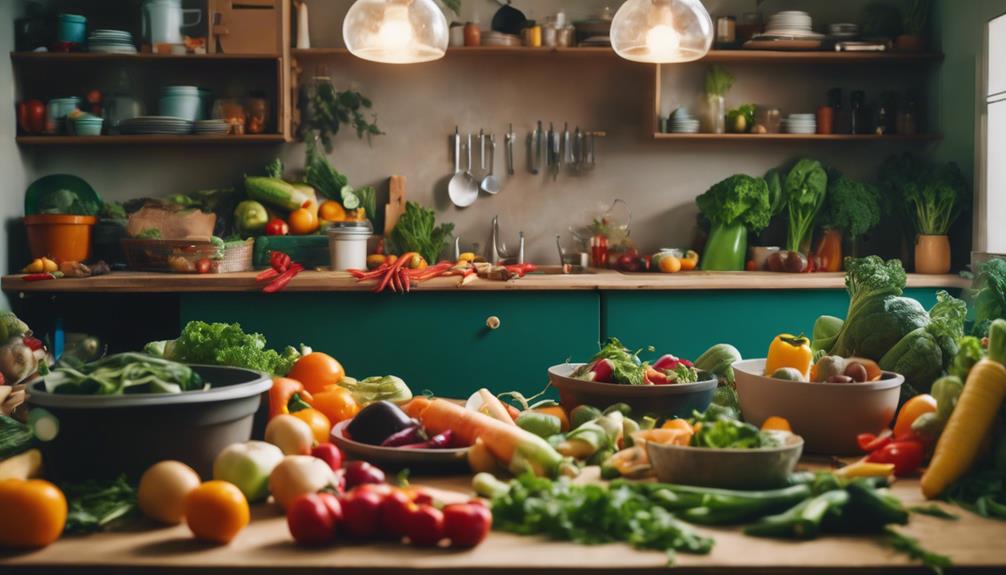
A staggering one-third of all food produced globally goes to waste, underscoring the urgent need for effective strategies to tackle this issue. By reducing food waste, you can markedly enhance food security and contribute to a sustainable food future. Just imagine, cutting waste by 25% could close the projected food gap by 12%, making a real difference in feeding those in need.
Minimizing food waste also has a direct impact on agricultural water consumption. Agriculture accounts for 70% of accessible fresh water withdrawals, so every bit of waste you help reduce conserves precious resources. You can play a role in this by advocating for better food storage, transportation, and processing methods throughout the food supply chain.
Furthermore, consumer education is essential. Many individuals unknowingly contribute to waste through improper purchasing and disposal practices. By becoming more aware of your habits and sharing that knowledge with others, you can foster a culture of environmental sustainability.
Together, we can tackle food waste effectively, ensuring that the food we produce nourishes rather than goes to waste. Your actions matter, and change starts with you.
Enhancing Crop Yields Sustainably

Enhancing crop yields sustainably is essential for meeting the growing food demands of our planet while preserving important resources. You can markedly improve food production without expanding agricultural land by adopting practices like increasing planting frequency on existing cropland. This approach not only boosts yields but also supports sustainable agriculture.
Incorporating enhanced soil management techniques can also play a vital role. By addressing soil degradation, you can revitalize one-quarter of the global cropland, thereby improving food security and minimizing environmental impacts. Additionally, conventional breeding techniques have historically contributed to yield gains, and integrating molecular biology can push these advancements even more.
Agroforestry practices offer another effective means to enhance crop yields. By regenerating land and promoting biodiversity, these practices align with sustainable food production goals while also benefiting the ecosystem.
Ultimately, by focusing on these innovative and sustainable methods, you can enhance crop yields and contribute to a more resilient agricultural system that meets our planet's increasing needs, all while protecting the resources we rely on.
Protecting Ecosystems and Biodiversity

When you think about sustainable feeding solutions, consider how protecting ecosystems and biodiversity plays an essential role.
Implementing ecosystem restoration strategies and sustainable land management practices can help you balance agricultural productivity with environmental health.
Ecosystem Restoration Strategies
Ecosystem restoration strategies play an essential role in balancing agricultural expansion with the need to protect biodiversity and enhance food production. By reforesting unproductive agricultural lands, you can offset the pressures of expanding agriculture while benefiting local ecosystems. Effective agricultural practices focus on using low environmental opportunity cost lands, which maximize food production potential without harming biodiversity.
Linking productivity gains with ecosystem protection is key. For instance, Brazil's model demonstrates how tying low-interest credit to forest preservation can incentivize farmers. This approach not only fosters sustainable agricultural practices but also boosts financial support for initiatives that enhance land resilience.
To achieve successful ecosystem restoration, collaboration is essential. Governments, NGOs, and farmers must work together to implement effective restoration measures. Providing financial and technical support enables farmers to adopt improved practices that align with ecosystem health and food production goals.
Biodiversity Conservation Practices
Biodiversity conservation practices actively protect and restore ecosystems, ensuring agricultural resilience and sustainability. By adopting sustainable land-use practices, you can enhance biodiversity and improve soil health, leading to better yields without the need for more land.
| Practice | Benefits |
|---|---|
| Agroforestry | Increases biodiversity, provides habitats, and improves land productivity. |
| Crop Rotation | Enhances soil fertility and reduces pest pressure while diversifying crops. |
| Protecting Pollinators | Supports crop reproduction and maintains healthy ecosystems. |
| Conserving Ecosystems | Provides essential ecosystem services that support agricultural productivity. |
Integrating these practices creates a synergistic effect that boosts the resilience of agricultural systems. For instance, by fostering diverse habitats, you can attract pollinators, which are essential for many crops. Furthermore, agroforestry not only sequesters carbon but also enhances biodiversity, making your agricultural practices more sustainable. Ultimately, these strategies are imperative for ensuring food security while protecting our planet's ecosystems. Embracing biodiversity conservation is not just an option; it's a necessity for a sustainable future.
Sustainable Land Management
Sustainable land management practices play an important role in protecting ecosystems and enhancing biodiversity while ensuring agricultural productivity. By prioritizing low environmental opportunity cost lands for cropland expansion, you can help preserve areas rich in biodiversity and ecological value. Implementing agroforestry can regenerate degraded lands, greatly increasing crop yields and promoting ecosystem protection.
To achieve these goals, it's important to provide financial and technical support for farmers. This assistance enables them to adopt improved practices that enhance both productivity gains and environmental health. For instance, reforesting unproductive agricultural lands not only offsets agricultural expansion but also conserves essential ecosystems and biodiversity.
In Brazil, a model linking low-interest credit to forest preservation demonstrates how sustainable land management can effectively balance agricultural needs with ecosystem protection.
By embracing these strategies, you can contribute to a more sustainable future, ensuring that food production doesn't come at the expense of the planet's health.
Innovations in Food Technology
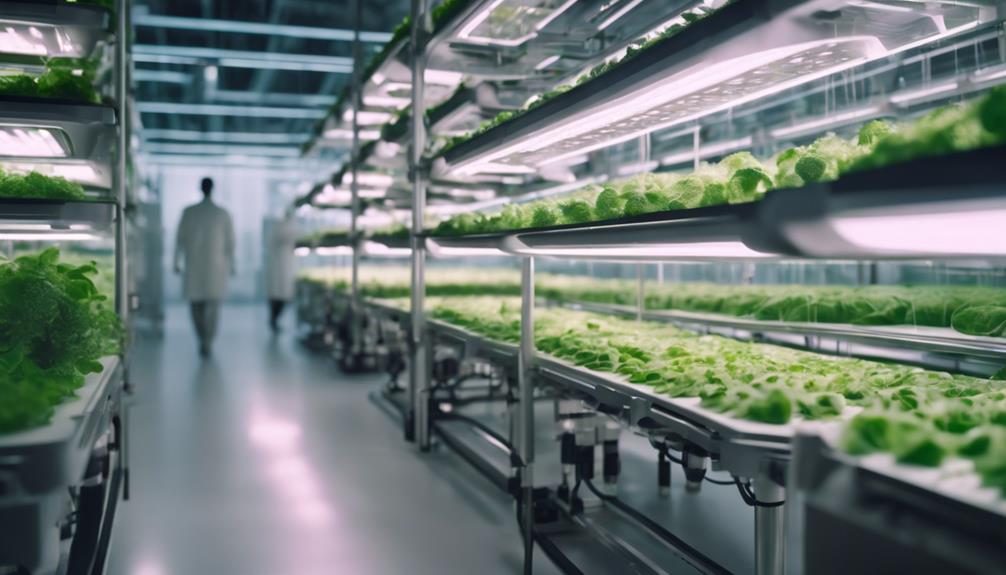
Innovations in food technology are rapidly transforming how we produce and consume food, making it possible to meet rising demands with minimal environmental impact.
One major advancement is CRISPR technology, which enables the development of more resilient, higher-yielding crop varieties, addressing food scarcity sustainably. Additionally, lab-grown meat offers a promising alternative to traditional livestock farming, potentially slashing greenhouse gas emissions by up to 96%.
Precision agriculture utilizes data analytics and IoT technologies to optimize resource usage, improving crop yields by up to 15% while minimizing water and fertilizer waste. This approach not only boosts productivity but also promotes sustainable agricultural practices.
Vertical farming techniques allow for crop cultivation in urban environments using 90% less water than conventional methods and without pesticides, considerably reducing the environmental impact. Meanwhile, aquaponics combines fish farming with hydroponics, creating a symbiotic environment that produces food with 90% less water than traditional farming and decreases reliance on chemical fertilizers.
Together, these innovations pave the way for a sustainable food future, ensuring that we can feed the world's growing population while protecting our planet.
Shifting Dietary Preferences
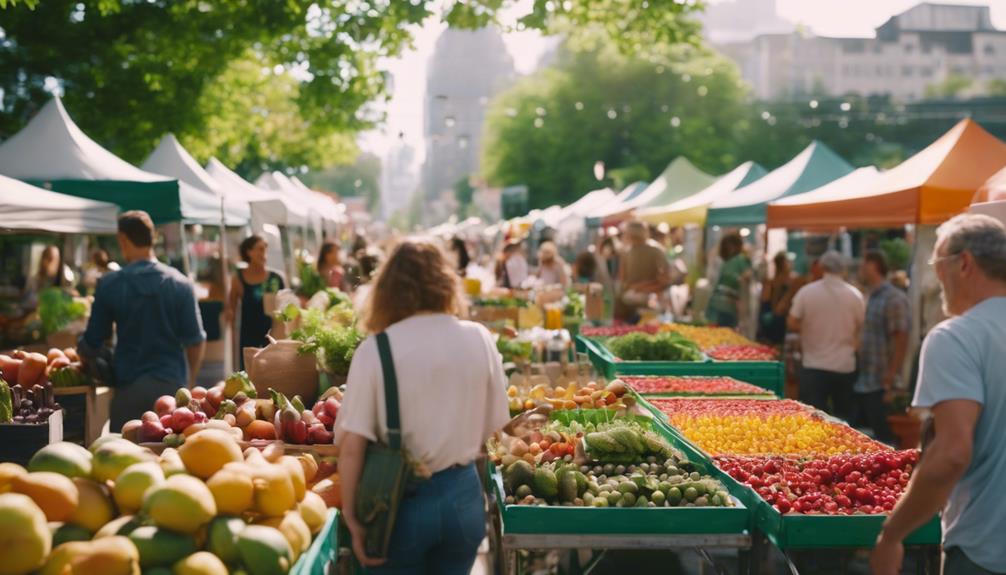
As more people recognize the environmental impact of their food choices, shifting dietary preferences towards plant-based options are becoming increasingly important for reducing greenhouse gas emissions. By opting for plant-based foods, you not only contribute to a more sustainable food system but also help mitigate the projected 88% rise in ruminant meat consumption by 2050.
Reducing your meat intake can lead to an estimated 11% decrease in agricultural greenhouse gas emissions. With the current agricultural land area insufficient to meet future food demands, these dietary changes can help close the 593 million-hectare land gap by lessening the need for resource-intensive animal-based foods.
Additionally, around one-quarter of food produced for consumption is wasted. If you reduce this waste by just 25%, you can help alleviate food insecurity while promoting a more sustainable food system.
It's essential to remember that the global food system currently contributes 25-30% of total greenhouse gas emissions. By embracing shifting dietary preferences, you play a key role in combating climate change and ensuring that future generations have access to a thriving planet.
Collaborative Solutions for the Future
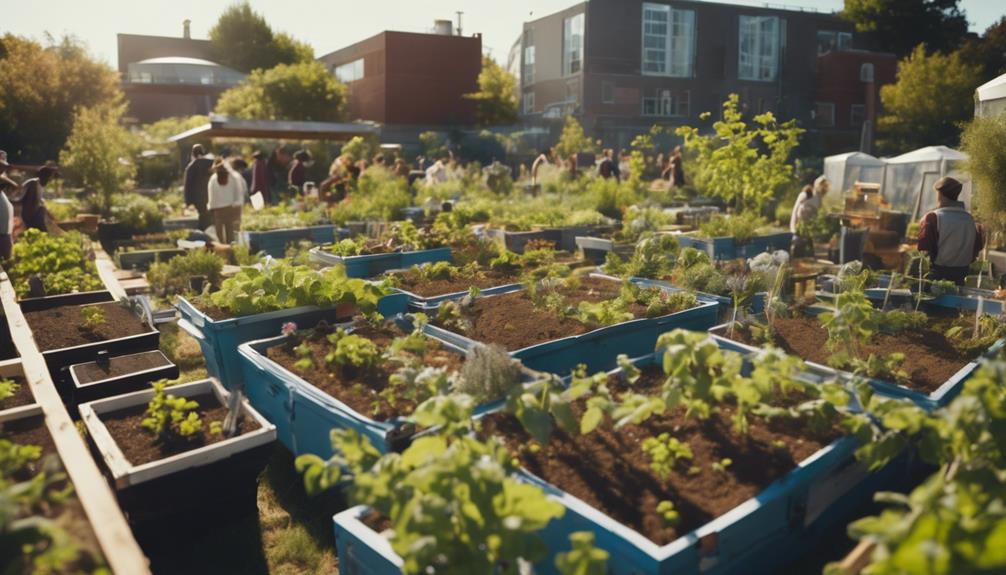
Collaborative solutions among governments, NGOs, and farmers are key to creating a resilient food system that meets future demands while protecting our planet. By working together, these stakeholders can implement sustainable agricultural practices that not only boost food production but also safeguard ecosystems. For instance, Brazil's innovative model of linking low-interest credit to forest conservation highlights how effective these combined initiatives can be.
To close the food and greenhouse gas gaps, it's vital to engage multiple stakeholders across various sectors and regions. You can facilitate the adoption of the recommended actions needed for a sustainable future.
Providing financial and technical support to farmers is critical; it helps them adopt improved production methods and enhances crop breeding initiatives.
Moreover, fostering systemic thinking and adaptive policy frameworks allows us to tackle the root causes of food insecurity. This holistic approach promotes sustainable food systems globally while ensuring that everyone's needs are met.
By embracing collaboration, we can develop a future where food production is both efficient and environmentally friendly, creating a win-win scenario for all involved.
Let's take action now for a sustainable tomorrow!
Frequently Asked Questions
How Can We Feed the Entire Population Sustainably?
To feed the entire population sustainably, you should focus on reducing food waste, adopting plant-based diets, improving agricultural efficiency, and utilizing advanced technologies. These steps can greatly enhance food production while minimizing environmental impact.
How Can We Make People More Aware of Eco Fashion?
You're surrounded by fast fashion's allure, yet unaware of its dire consequences. Share eco fashion's story through social media, host engaging events, and educate friends on sustainable choices. Together, you can spark a movement for change.
How Can We Make Sustainable Fashion More Accessible?
To make sustainable fashion more accessible, you can promote eco-friendly materials, support clothing rental and resale platforms, and participate in community workshops. Collaborating with influencers can also help raise awareness and interest in ethical brands.
How Can the Fashion Industry Become More Sustainable?
Imagine a world where fashion blooms sustainably. You can drive change by choosing eco-friendly brands, supporting recycling, and advocating for circular practices. Every conscious choice you make today shapes a greener tomorrow for the industry.
Is the Cost of Sustainable Fashion a Barrier to Feeding the Increasingly Large Population in a Sustainable Fashion?
The sustainable fashion cost analysis is a crucial factor in addressing the barrier of feeding an increasingly large population. As the demand for sustainable fashion grows, finding affordable alternatives is essential to ensure that resources are allocated towards sustainable food production for the growing population.
Conclusion
In tackling the challenge of feeding our growing population, you've got to think outside the box.
By embracing sustainable practices, reducing food waste, and fostering innovations in food technology, we can turn the tide.
It's clear that shifting dietary preferences and protecting our ecosystems are essential steps.
Together, we can cultivate a brighter future where everyone has access to nutritious food.
After all, many hands make light work, and collaboration is key to success!
